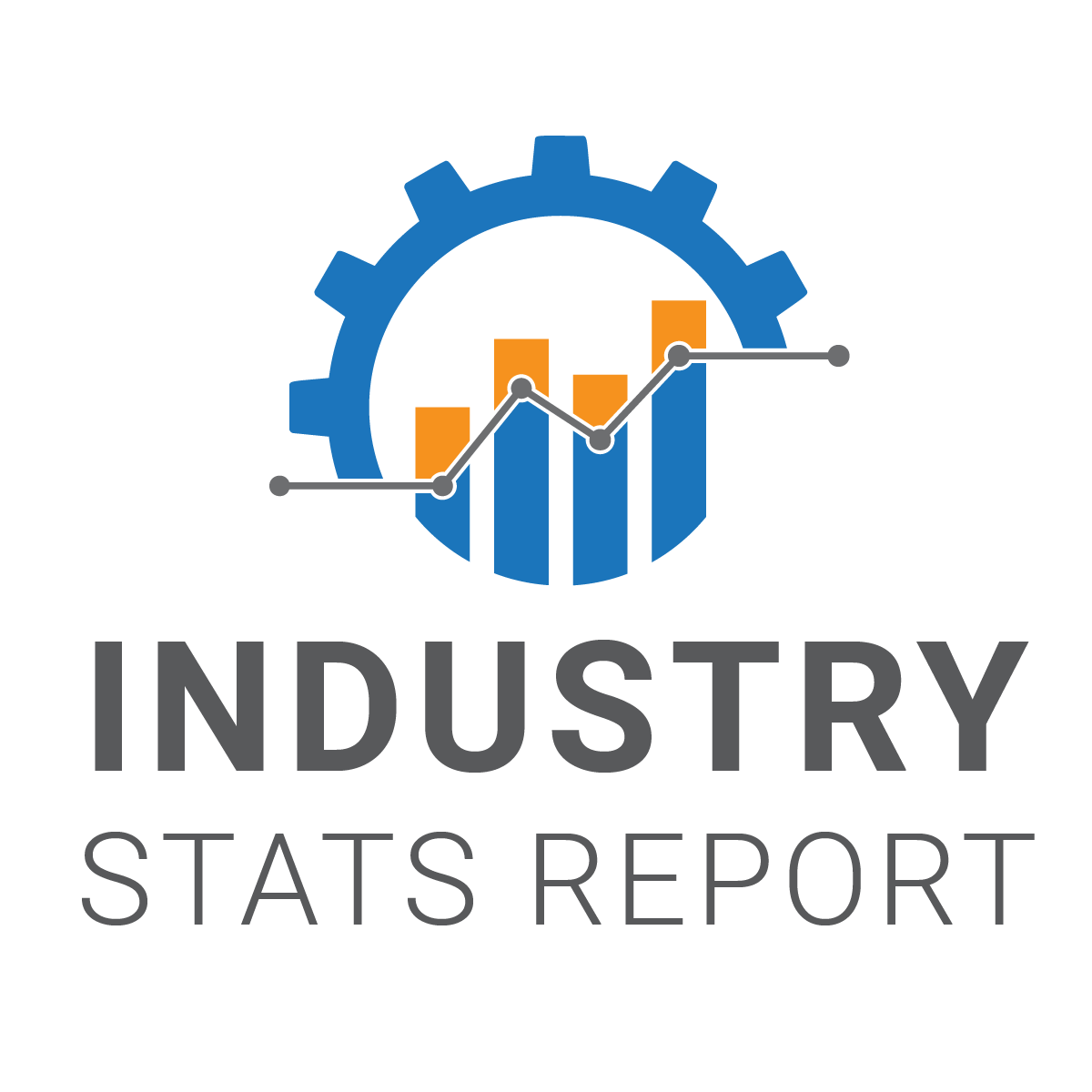
Tuberculosis Drug
Global Tuberculosis Drug Market: Global Market Size, Trends, Competitive, Historical & Forecast Analysis, 2020-2025
Report ID: BMRC 2496 | Number of pages: 195 | Publish Date: Jan 2020 | Category: Lifesciences and HealthcareTuberculosis Drug Market Report evaluates the growth rate and the Market value based on Market dynamics, growth inducing factors. The complete knowledge is based on latest industry news, opportunities and trends. The report contains a comprehensive Market analysis and vendor landscape in addition to a SWOT analysis of the key vendors.
Tuberculosis (TB) is an infectious disease, which is caused by Mycobacterium tuberculosis. These bacteria generally infect human lungs. However, it can infect other body parts/organs as well. Three major types of tuberculosis are found: latent, active, and drug-resistant tuberculosis. Symptoms are not identifiable in case of latent tuberculosis, due to presence of an inactive form of bacteria. In active tuberculosis, symptoms are clearly visible and they can spread from one person to another. Coughing for more than two weeks, chest pain, coughing up blood, chills, fatigue, unintentional weight loss, fever, and loss of appetite are some of the common symptoms of active tuberculosis. HIV/AIDS, severe kidney disease, cancer, diabetes, and malnutrition are some of the key risk factors generally found to be associated with tuberculosis.
Growing prevalence of multi-drug resistant tuberculosis is driving the tuberculosis drugs market. Drug shortages is a major restraint for the tuberculosis drugs market, especially in low- to medium-income countries of the world. Tuberculosis associated with diseases such as HIV/AIDS and conditions such as obesity is extremely difficult to manage. The tuberculosis drugs market can be segmented based on drug class, disease type, end-user, and region. In terms of drug class, the market can be categorized into first-line therapy, second-line therapy, and combination therapy. Isoniazid, Pyrazinamide, Rifampin, and Ethambutol majorly constitute the first-line therapy for TB; while Streptomycin, Capreomycin, Ethionamide, Levofloxacin, and Gatifloxacin are generally considered as a part of the second-line therapy. Second-line therapy is expected to be a rapidly growing segment of the tuberculosis drugs market.
In this report, 2018 has been considered as the base year and 2019 to 2025 as the forecast period to estimate the market size for Tuberculosis Drug. This report studies the global market size of Tuberculosis Drug, especially focuses on the key regions like United States, European Union, China, and other regions (Japan, Korea, India and Southeast Asia).
This study presents the Tuberculosis Drug sales volume, revenue, market share and growth rate for each key company, and also covers the breakdown data (sales, revenue and market share) by regions, type and applications. history breakdown data from 2014 to 2019, and forecast to 2025.
For top companies in United States, European Union and China, this report investigates and analyzes the production, value, price, market share and growth rate for the top manufacturers, key data from 2014 to 2019.
In global market, the following companies are covered:
Lupin
Otsuka Novel Products
Pfizer
Sanofi
Market Segment by Product Type
First-line Anti-TB Drugs
Second-line Anti-TB Drugs
Market Segment by Application
Active TB
Latent TB
In this study, the years considered to estimate the market size of Tuberculosis Drug are as follows:
History Year: 2014-2018
Base Year: 2018
Estimated Year: 2019
Forecast Year 2019 to 2025
Global Tuberculosis Drug Market 2019 Industry research report is a proficient and in-depth research report on the world’s major regional market conditions, focusing on the main regions (North America, Europe and Asia-Pacific). It covers the market landscape and its growth prospects over the coming years. The report also includes a discussion of the Key Vendors operating in this Global market. This Report Focuses on the Major Drivers, Restraints, Opportunities and Threats for Key Players. It also Provides Granular Analysis of Market Share, Segmentation, Revenue Forecasts and Regional Analysis till 2025.
The study objectives are:
To analyze and research the Tuberculosis Drug status and future forecast in United States, European Union and China, involving sales, value (revenue), growth rate (CAGR), market share, historical and forecast.
To present the key Tuberculosis Drug manufacturers, presenting the sales, revenue, market share, and recent development for key players.
To split the breakdown data by regions, type, companies and applications
To analyze the global and key regions market potential and advantage, opportunity and challenge, restraints and risks.
To identify significant trends, drivers, influence factors in global and regions
To analyze competitive developments such as expansions, agreements, new product launches, and acquisitions in the market
Table of Content Chapter 1 Global Tuberculosis Drug Market: Summary and Quantitative Analysis 1.1 Report Description 1.2 Global Tuberculosis Drug Market Revenue Overview 1.3 Global Tuberculosis Drug Market Revenue (USD Billion) and Growth (%) Rate, 2015- 2025 Chapter 2 Global Tuberculosis Drug Market: Overview and Qualitative Analysis 2.1 Executive Summary 2.2 Market Drivers 2.3 Market Restraints 2.4 Market Opportunities 2.5 Market Trends 2.6 Global Tuberculosis Drug Market: SWOT Analysis 2.7 Global Tuberculosis Drug Market: PEST Analysis 2.7 Global Tuberculosis Drug Market: Porter’s Five Forces Analysis 2.8 Global Tuberculosis Drug Market: Attractiveness Analysis 2.8.1 Global Tuberculosis Drug Market: Attractiveness Analysis by Type 2.8.2 Global Tuberculosis Drug Market: Attractiveness Analysis by Grade 2.8.3 Global Tuberculosis Drug Market: Attractiveness Analysis by Regional Chapter 3 Competitive Analysis 3.1 Global Tuberculosis Drug Market 3.1.1 Global Tuberculosis Drug market Revenue (USD Billion), By Players 2018 3.1.2 Global Tuberculosis Drug Market Revenue Share (%), By Players 2018 Chapter 5 Global Tuberculosis Drug Market: By Product Type 5.1 Global Tuberculosis Drug Market Share (%), By Product Type, 2018 5.2 Global Tuberculosis Drug Market Revenue (USD Billion), By Product Type, 2015 – 2025 5.3 Global Tuberculosis Drug Market Revenue (USD Billion), By Retro,2015-2025 5.4 Global Tuberculosis Drug Market Revenue (USD Billion), By Standing/Self-Balancing, 2015-2025 5.4 Global Tuberculosis Drug Market Revenue (USD Billion), By Folding, 2015-2025 5.5 Global Tuberculosis Drug Market Revenue Share (%), By Product Type, 2015 – 2025 5.6 Global Tuberculosis Drug Market Revenue Market Share (%), By Product Type, 2015-2025 Chapter 6 Global Tuberculosis Drug Market: By Product Type 6.1 Global Tuberculosis Drug Market Share (%), By Product Type, 2018 6.2 Global Tuberculosis Drug Market Revenue (USD Billion), By Type, 2015 – 2025 Chapter 7 North America Tuberculosis Drug Market Analysis 7.1 North America Market Snapshot 7.1.1 North America Tuberculosis Drug Market Revenue and Growth Rate (%), 2015-2025. 7.1.2 North America Tuberculosis Drug Market Revenue (USD Billion) Overview, by Country, 2015 – 2025 7.1.3 North America Tuberculosis Drug Market Revenue (USD Billion) and Growth Rate (%), 2015 – 2025. 7.1.5 North America Tuberculosis Drug Revenue (USD Billion) Overview, By Product Type, 2015-2025 7.1.6 North America Tuberculosis Drug Revenue (USD Billion) Overview, By Product Type , 2015-2025 Chapter 8 Europe Tuberculosis Drug Market Analysis 8.1 Europe Market Snapshot 8.1.1 Europe Tuberculosis Drug Market Revenue and Growth Rate (%), 2015-2025. 8.1.2 Europe Tuberculosis Drug Market Revenue (USD Billion) Overview, by Country, 2015 – 2025 8.1.3 Europe Tuberculosis Drug Market Revenue (USD Billion) and Growth Rate (%), 2015 – 2025. 8.1.5 Europe Tuberculosis Drug Revenue (USD Billion) Overview, By Product Type, 2015-2025 8.1.6 Europe Tuberculosis Drug Revenue (USD Billion) Overview, By Type, 2015-2025 Chapter 9 Asia Pacific Tuberculosis Drug Market Analysis 9.1 Asia Pacific Market Snapshot 9.1.1 Asia Pacific Tuberculosis Drug Market Revenue and Growth Rate (%), 2015-2025. 9.1.2 Asia Pacific Tuberculosis Drug Market Revenue (USD Billion) Overview, by Country, 2015 – 2025 9.1.3 Asia Pacific Tuberculosis Drug Market Revenue (USD Billion) and Growth Rate (%), 2015 – 2025. 9.1.5 Asia Pacific Tuberculosis Drug Revenue (USD Billion) Overview, By Product Type, 2015-2025 9.1.6 Asia Pacific Tuberculosis Drug Revenue (USD Billion) Overview, By Type, 2015-2025 Chapter 10 Latin America Tuberculosis Drug Market Analysis 10.1 Latin America Market Snapshot 10.1.1 Latin America Tuberculosis Drug Market Revenue and Growth Rate (%), 2015-2025. 10.1.2 Latin America Tuberculosis Drug Market Revenue (USD Billion) Overview, by Country, 2015 – 2025 10.1.3 Latin America Tuberculosis Drug Market Revenue (USD Billion) and Growth Rate (%), 2015 – 2025. 10.1.5 Latin America Tuberculosis Drug Revenue (USD Billion) Overview, By Product Type, 2015-2025 10.1.6 Latin America Tuberculosis Drug Revenue (USD Billion) Overview, By Type, 2015-2025 Chapter 11 Middle East & Africa Tuberculosis Drug Market Analysis 11.1 Middle East & Africa Market Snapshot 11.1.1 Middle East & Africa Tuberculosis Drug Market Revenue and Growth Rate (%), 2015-2025. 11.1.2 Middle East & Africa Tuberculosis Drug Market Revenue (USD Billion) Overview, by Country, 2015 – 2025 11.1.3 Middle East & Africa Tuberculosis Drug Market Revenue (USD Billion) and Growth Rate (%), 2015 – 2025. 11.1.5 Middle East & Africa Tuberculosis Drug Revenue (USD Billion) Overview, By Product Type, 2015-2025 11.1.6 Middle East & Africa Tuberculosis Drug Revenue (USD Billion) Overview, By Type, 2015-2025 Chapter 12 Competitive Analysis 12.1 Company 1. 12.1.1 Company Basic Information, Manufacturing Base, Sales Area and Its Competitors 12.1.2 Company 1. Total Company Revenue 2015-2018 12.1.3 Company 1. Total Company Revenue, By Segment of Business 2015-2018 12.1.4 Company 1. Total Company Revenue, By Region 2015-2018 12.1.5 Company 1. Global Tuberculosis Drug Product Category and Description 12.1.6 Company 1. Recent Activity 2015-2019 12.1.7 Main Business/Business Overview 12.1.8 Business Strategy 12.1.9 SWOT Analysis 12.2 Company 2. 12.2.1 Company Basic Information, Manufacturing Base, Sales Area and Its Competitors 12.2.2 Company 2. Total Company Revenue 2015-2018 12.2.3 Company 2. Total Company Revenue, By Segment of Business 2015-2018 12.2.4 Company 2. Total Company Revenue, By Region 2015-2018 12.2.5 Company 2. Global Tuberculosis Drug Product Category and Description 12.2.6 Company 2. Recent Activity 2015-2019 12.2.7 Main Business/Business Overview 12.2.8 Business Strategy 12.2.9 SWOT Analysis 12.3 Company 3 12.3.1 Business Overview 12.3.2 Company 3Market Product Category and Description & Specification 12.3.3 Main Business/Business Overview 12.3.4 Business Strategy 12.3.5 SWOT Analysis 12.4 Company 4. 12.4.1 Business Overview 12.4.2 Company 4.Company Total Company Revenue 2015-2018 12.4.3 Company 4.Company Total Company Revenue, By Segment of Business 2015-2018 12.4.4 Company 4.Company Total Company Revenue, By Region of Business 2015-2018 12.4.5 Company 4.Company Product Category, Specification and Description 12.4.6 Company 4.Company Recent Mergers & Acquisitions (M&A) Activity 2015-2019 12.4.7 Company 4.Company Main Business/Business Overview 12.4.8 Business Strategy 12.4.9 SWOT Analysis 12.5 Company 5 12.5.1 Business Overview 12.5.2 Company 5 Company Net Sales 2015-2018 12.5.3 Company 5 Company Net Sales, By Segment of Business 2011-2018 12.5.4 Company 5 Company Net Sales, By Region 2015-2018 12.5.5 Company 5 Tuberculosis Drug Market Product Category and Specification 12.5.6 Company 5 Recent Mergers & Acquisitions (M&A) Activity 2015-2019 12.5.7 Company 5 Main Business/Business Overview 12.5.8 Business Strategy 12.5.9 SWOT Analysis 12.6 Company 6 12.6.1 Business Overview 12.6.2 Company 6 Tuberculosis Drug Market Product Category and Specification 12.6.3 Company 6 Recent Mergers & Acquisitions (M&A) Activity 2015-2019 12.6.4 Company 6 Main Business/Business Overview 12.6.5 Business Strategy 12.6.6 SWOT Analysis Chapter 13 Market Research Findings & Conclusion Chapter 14 Research Methodology 14.1 Research Process 14.2 Primary Research 14.3 Secondary Research 14.4 Market Size Estimates 14.5 Forecast Model 14.7 Who is This Report For? 14.8 USP’s of Report List of Figures FIG. 1 Global Tuberculosis Drug Market Revenue (USD Billion) and Growth Rate (%), 2015- 2025 FIG. 4 Global Tuberculosis Drug Market: Attractiveness Analysis By Product Type FIG. 5 Global Tuberculosis Drug Market: Attractiveness Analysis By Type FIG. 6 Global Tuberculosis Drug Market: Attractiveness Analysis by Regional FIG. 7 Global Tuberculosis Drug Market FIG. 8 Global Tuberculosis Drug Market Share (%), By Product Type, 2018 FIG. 9 Global Tuberculosis Drug Market Revenue (USD Billion), By Application, 2015-2025 FIG. 10 Global Tuberculosis Drug Market Revenue (USD Billion), By End Use , 2015-2025 FIG. 10 Global Tuberculosis Drug Market Revenue (USD Billion), By Type, 2015-2025 FIG. 11 Global Tuberculosis Drug Market Revenue Market Share (%), By Product Type, 2015-2025 FIG. 20 North America Tuberculosis Drug Market Revenue (USD Billion) and Growth Rate (%), 2015-2025. FIG. 21 North America Tuberculosis Drug Market Revenue (USD Billion) and Growth Rate (%), 2015 – 2025. FIG. 22 Europe Tuberculosis Drug Market Revenue (USD Billion) and Growth Rate (%), 2015-2025. FIG. 23 Europe Tuberculosis Drug Market Revenue (USD Billion) and Growth Rate (%), 2015 – 2025. FIG. 24 Asia Pacific Tuberculosis Drug Market Revenue (USD Billion) and Growth Rate (%), 2015-2025. FIG. 25 Asia Pacific Tuberculosis Drug Market Revenue (USD Billion) and Growth Rate (%), 2015 – 2025. FIG. 26 Latin America Tuberculosis Drug Market Revenue (USD Billion) and Growth Rate (%), 2015-2025. FIG. 27 Latin America Tuberculosis Drug Market Revenue (USD Billion) and Growth Rate (%), 2015 – 2025. FIG. 28 Middle East & Africa Tuberculosis Drug Market Revenue (USD Billion) and Growth Rate (%), 2015-2025. FIG. 29 Middle East & Africa Tuberculosis Drug Market Revenue (USD Billion) and Growth Rate (%), 2015 – 2025. FIG. 30 Company 1. Total Company Revenue 2015-2018 (USD Million, R & D Expenses %) FIG. 31 Company 1. Total Company Revenue, by Segment of Business 2015-2018 (USD Million, AGR %) FIG. 32 Company 1. Total Company Revenue, by Region 2015-2018 (USD Million, AGR %) FIG. 33 Company 2. Total Company Revenue 2015-2018 (USD Million) FIG. 34 Company 2. Total Company Revenue, by Segment of Business 2015-2018 (USD Million, AGR %) FIG. 35 Company 2. Total Company Revenue, by Region 2015-2018 (USD Million, AGR %) 119 FIG. 36 Company 3 Total Company Revenue 2015-2018 (USD Million) FIG. 37 Company 3 Total Company Revenue, by Segment of Business 2015-2018 (USD Million, AGR %) FIG. 38 Company 3 Total Company Revenue, by Region of Business 2015-2018 (USD Million, AGR %) FIG. 39 Company 4. Company Net Sales 2015-2018 (USD Million, R & D Expenses %) FIG. 40 Company 4. Company Net Sales, by Segment of Business 2015-2018 (USD Million, AGR %) FIG. 41 Company 4. Company Net Sales, by Region 2015-2018 (USD Million, AGR %) FIG. 42 Company 5 Total Company Revenue 2015-2018 (USD Million, R & D Expenses %) FIG. 43 Company 5 Total Company Revenue, by Segment of Business 2015-2018 (USD Million, AGR %) FIG. 44 Primary Research FIG. 45 Sources of Secondary Research FIG. 46 Forecast Model List of Tables TABLE 1 Global Tuberculosis Drug Market Overview TABLE 2 Market Driver Impact Analysis TABLE 3 Market Restraints Impact Analysis TABLE 4 Global Tuberculosis Drug market Revenue (USD Billion), By Players2018 TABLE 5 Global Tuberculosis Drug market Revenue Market share (%), By Players- 2018 TABLE 6 Global Tuberculosis Drug Market Revenue (USD Billion), By Product Type, 2015 - 2025 TABLE 7 Global Tuberculosis Drug Market Revenue Share (%), By Product Type, 2015 - 2025 TABLE 8 Global Tuberculosis Drug Market Revenue (USD Billion), By Product Type, 2015 - 2025 TABLE 9 Global Tuberculosis Drug Market Revenue Share (%), By Product Type, 2015 - 2025 TABLE 10 Global Tuberculosis Drug Market Revenue (USD Billion), 2015 - 2025 TABLE 11 Global Tuberculosis Drug Market Revenue Share (%), By , 2015 - 2025 More …………...




